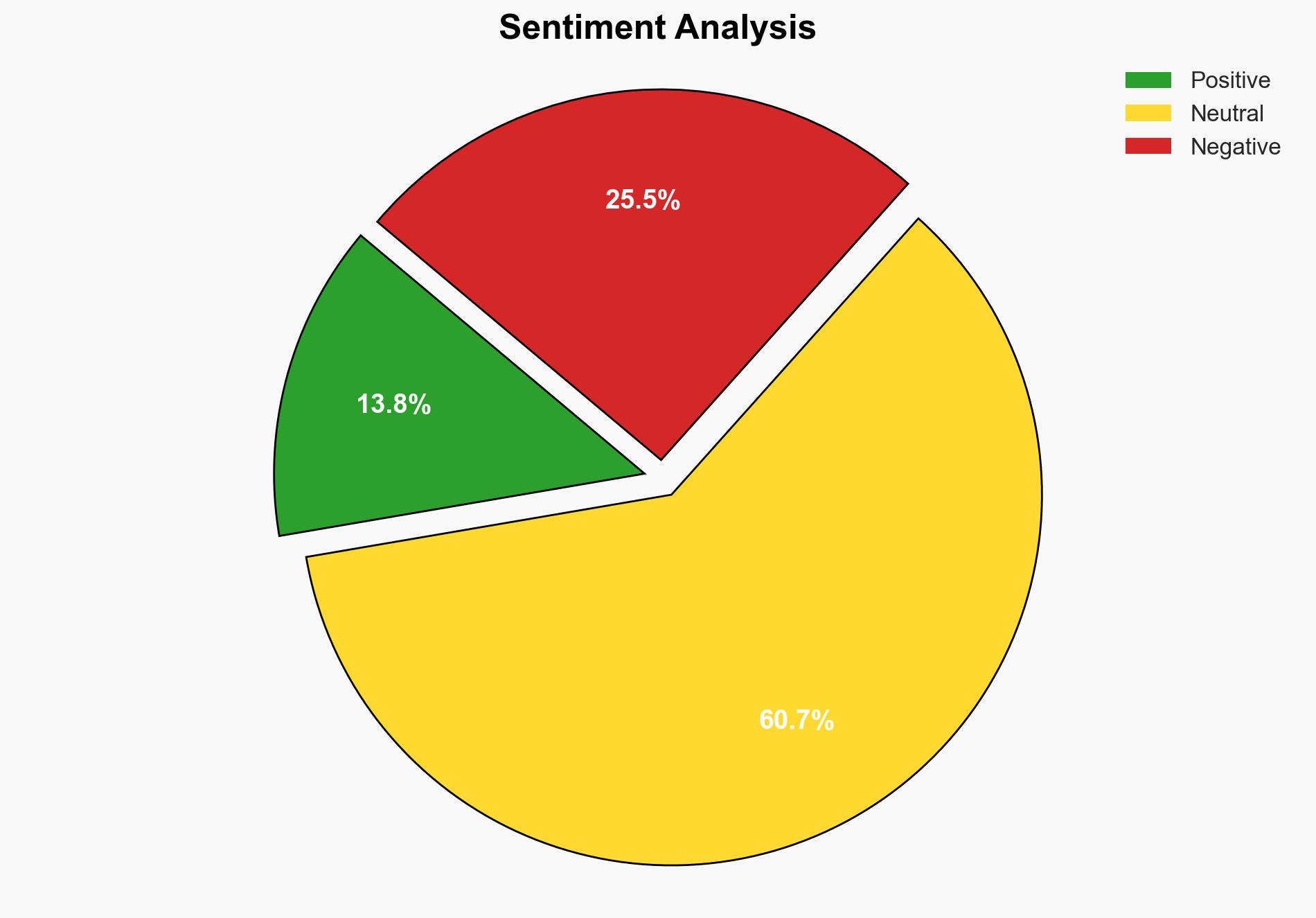Psst wanna be a fraudster Ordinary consumers are being lured into cybercrime – BetaNews
Published on: 2025-03-27
Intelligence Report: Psst wanna be a fraudster Ordinary consumers are being lured into cybercrime – BetaNews
1. BLUF (Bottom Line Up Front)
The democratization of cybercrime is increasingly luring ordinary consumers into fraudulent activities. A significant rise in payment fraud participation has been observed, with social media and deep web platforms like Telegram facilitating access to illicit services. This trend poses a substantial threat to financial systems and requires a strategic shift in risk management approaches.
2. Detailed Analysis
The following structured analytic techniques have been applied for this analysis:
General Analysis
Recent reports indicate a concerning trend where ordinary consumers are being drawn into cybercrime, particularly payment fraud. The ease of access to stolen payment validation tools and the open advertisement of fraudulent services on social media and platforms like Telegram have significantly lowered the entry barriers for individuals to engage in such activities. This democratization of fraud is further exacerbated by the availability of “silver bullet” configuration services that enable users to bypass security measures with minimal technical expertise.
Data suggests that younger demographics, including Gen Z and Millennials, are more likely to engage in or unknowingly participate in payment fraud schemes. The report highlights a high attack rate on social media platforms, transportation services, and alternative payment methods, while traditional payment methods like credit and debit cards experience comparatively lower fraud rates.
3. Implications and Strategic Risks
The widespread involvement of ordinary consumers in cybercrime poses significant risks to national security and economic stability. The increasing sophistication and accessibility of fraud tools threaten financial institutions and consumer trust. The trend could lead to a rise in financial crimes, impacting regional stability and potentially facilitating other forms of cybercrime.
4. Recommendations and Outlook
Recommendations:
- Enhance public awareness campaigns to educate consumers about the risks and legal consequences of participating in cybercrime.
- Strengthen regulatory frameworks to address the proliferation of fraudulent services on social media and deep web platforms.
- Invest in advanced technological solutions to detect and prevent payment fraud more effectively.
- Encourage collaboration between financial institutions and law enforcement to share intelligence and combat cybercrime.
Outlook:
In the best-case scenario, increased awareness and improved security measures could reduce consumer participation in cybercrime. In the worst-case scenario, continued growth in fraud participation could lead to widespread financial instability and erosion of consumer trust. The most likely outcome involves a gradual increase in cybercrime activities, necessitating ongoing vigilance and adaptation by stakeholders.
5. Key Individuals and Entities
The report mentions Kevin Lee as a significant individual in the context of the analysis. No specific roles or affiliations are provided.




